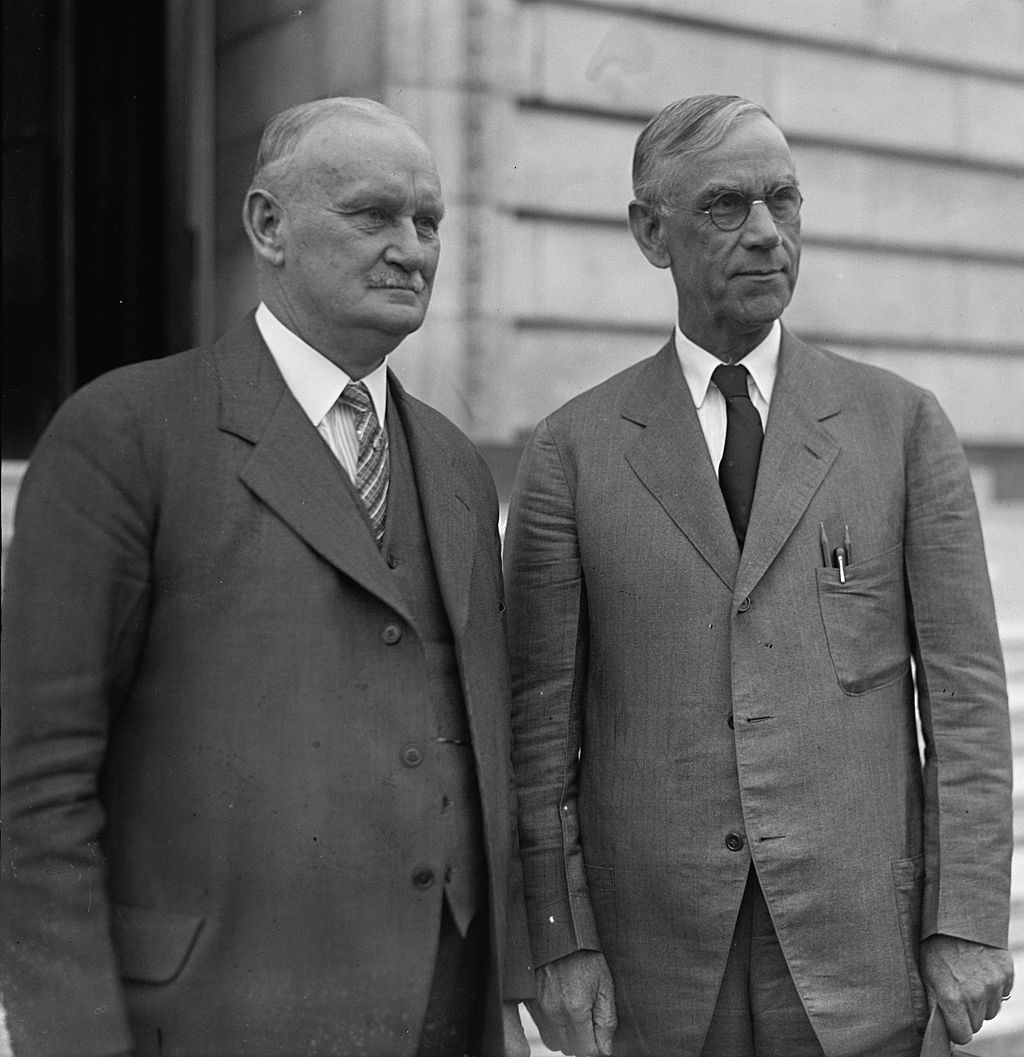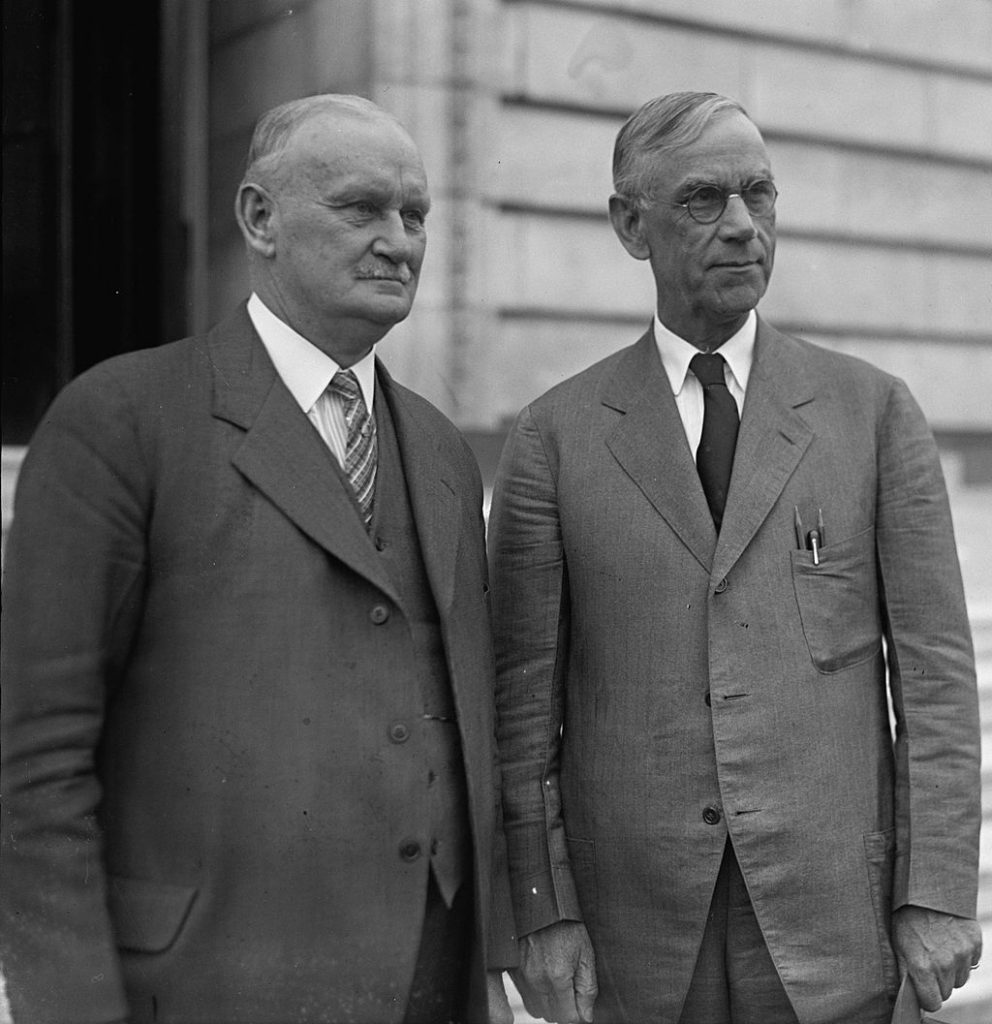

If you’re like me, the Smoot-Hawley (sometimes called Hawley-Smoot) Tariff Act is a vague memory from high school history class and a less-vague memory from this scene in Ferris Bueller’s Day Off:
Since tariffs have been in the news lately, I thought this would be a good time to review the most infamous tariff act in United States history, the Smoot-Hawley Act of 1930.
Background
To understand how Smoot-Hawley came about, it’s helpful to understand the decade preceding its enactment. The “Roaring Twenties” were a period of economic expansion in the United States, particularly in the industrial arena. Although 1920-1921 was marked by a brief depression, brought on, in part, by the transition from a wartime to a peacetime economy and the influx of returning veterans to the workforce, by 1923, unemployment was at 2.4% (vs 11.7% in 1921). Electricity was becoming more widespread for the average consumer, leading to growth in demand for new, electric consumer goods; its industrial use enabled factories to grow and produce at record-breaking levels. The automobile was becoming widely available, and with it came the growth of homeownership and the beginnings of suburban development. Radio and movies were not just a source of entertainment, they were a vehicle for mass marketing, and consumers responded.
This rosy picture did not, however, extend to rural America. During WWI, farmers had benefitted from high levels of farm exports while Europe was undergoing the devastation of war. The end of the war diminished that market as European farms were reestablished and demand lessened, and prices dropped drastically. Additionally, during the war, many farmers had taken out loans to enable purchases of land and equipment to meet the demand, but now, with demand slashed, they were unable to pay their notes; during the 1920s, more than 600,000 farmers went bankrupt. Electrification in rural areas was rare and slow; even by the 1930s, only about 10% of farms had electricity. Horse-drawn transportation was still common as the only reliable way to navigate poor roads, and while rural areas were not totally isolated, there was a widening gap between rural Americans and the burgeoning middle-class of the cities.
The political response to what was a real farm crisis was mixed. The Democrats of the time typically favored tariffs as a way to raise revenue, while the 1920 Republicans favored tariffs as a means of protectionism. In early 1921, an emergency tariff bill passed the House and Senate but was vetoed by Democratic president Woodrow Wilson; when Republican Warren Harding took office in March 1921, the bill was passed again and signed. This bill was intended to be a temporary, stop-gap measure until a full tariff act could be passed, and in June 1921, the House started work on the Fordney bill, while the Senate started work in January 1922 on the McCumber bill, named for the Republican chair of the Finance Committee. When the bill came out of committee, it had more than 2000 amendments. Democrats worked to delay and derail the bill, but it passed the Senate and after a contentious conference committee, was signed in September 1922. One of the unique provisions of the Fordney-McCumber Act was giving the president the right to raise or lower tariff rates, based on the recommendations of a Tariff Commission. The less-unique provisions of the act enabled tariffs to rise almost 40% over the next two years, some of the most punitive rates ever enacted by the United States up to that point.
The road to Smoot-Hawley
By 1926, the consensus was that Fordney-McCumber had not worked and had created an untenable situation for European nations, who already owed the U.S. billions on loans made during and after WWI. European producers could not afford to export to the United States, and the loss of income impacted the ability of European governments to repay their debt. European and Latin American countries finally responded with retaliatory tariffs of their own.
Between 1925 and 1929, there were thirty-three general revisions, with substantial tariff changes in twenty-six European nations, and seventeen revisions and changes in Latin America. In 1927 and 1928, Australia, Canada and New Zealand all raised their tariff rates in response to the Fordney-McCumber Tariff. The Fordney-McCumber Tariff of 1922
In addition, U.S. farmers were overproducing, having never fully reduced their production after WWI. This overproduction in itself led to depressed farm prices. As the decade progressed, so too did mechanization of farming, which not only furthered overproduction but continued the cycle of loans/debt for farmers. To make matters worse, the tariffs had increased the cost of farm equipment; one report in 1926 showed that prices for equipment had at least doubled since the 1922 act, while purchasing power had decreased almost 55%. Farmers were still in trouble, and they once again called for action from the Federal government. Despite this evidence, the Farm Bloc in the Senate was powerful, and the Republicans still favored protectionism. During the 1928 presidential campaign, Herbert Hoover pledged to raise tariffs on imports of farm products, and the Republican platform went even further:
A protective tariff is as vital to American agriculture as it is to American manufacturing. The Republican Party believes that the home market, built up under the protective policy, belongs to the American farmer, and it pledges its support of legislation which will give this market to him to the full extent of his ability to supply it. Agriculture derives large benefits not only directly from the protective duties levied on competitive farm products of foreign origin, but also, indirectly, from the increase in the purchasing power of American workmen employed in industries similarly protected. These benefits extend also to persons engaged in trade, transportation, and other activities.
The Tariff Act of 1922 has justified itself in the expansion of our foreign trade during the past five years. Our domestic exports have increased from 3.8 billions of dollars in 1922 to 4.8 billions in 1927. During the same period imports have increased from 3.1 billions to 4.4 billions. Contrary to the prophesies of its critics, the present tariff law has not hampered the natural growth in the exportation of the products of American agriculture, industry, and mining, nor has it restricted the importation of foreign commodities which this country can utilize without jeopardizing its economic structure.
The United States is the largest customer in the world today. If we were not prosperous and able to buy, the rest of the world also would suffer. It is inconceivable that American labor will ever consent to the abolition of protection which would bring the American standard of living down to the level of that in Europe, or that the American farmer could survive if the enormous consuming power of the people in this country were curtailed and its market at home, if not destroyed, at least seriously impaired. Republican Party Platform of 1928
Smoot-Hawley Act
Once he was in office (March 1929), Hoover called for a special session of Congress to implement a farm tariff bill. Congress, however, with Republican majorities in both houses, had other ideas, and Smoot-Hawley became a wide-ranging tariff bill with special interests clamoring to be included; even tombstones were covered. Hoover, who was not an economic simpleton (as he is so often portrayed), had severe misgivings about the the bill and is credited with saying in private that the bill was, “vicious, extortionate, and obnoxious.” (The Smoot-Hawley Tariff of 1930) Hoover was not alone in his harsh assessment:
More than 1,000 economists sent President Hoover a petition asking him to veto the bill. Henry Ford called it an “economic stupidity.” Thomas Lamont of J.P. Morgan & Co. wrote that “I almost went down on my knees to beg Herbert Hoover to veto the asinine Hawley-Smoot Tariff. That Act intensified nationalism all over the world.” Smoot-Hawley Tariff: A Bad Law, Badly Timed
Smoot-Hawley raised rates on more than 20,000 items, and despite his misgivings, Hoover signed the bill when it finally came to him in June 1930. His reasoning was twofold: 1) it included the agricultural products he had pledged to protect in his 1928 campaign; and 2) it contained a provision for a Tariff Commission, similar to but stronger than in Fordney-McCumber, which gave him greater presidential control of discretionary tariff provisions. It was a political calculation based on his long-standing position that tariffs controlled by Congress were too subject to local pressures, while tariffs within the control of the executive would be determined by national interests. Although the crash of October 1929 made it unlikely that tariffs would be lowered, he believed that the high tariffs would be temporary, and he gained the flexible tariff authority for which he had long advocated. So he signed the bill, which resulted in the second-highest tariffs in U.S. history (the Tariff Act of 1828 had the highest).
The Impact
Economists and historians have varying opinions about the effect of Smoot-Hawley, but there is general agreement that it took a bad situation and made it worse. Many economists would argue that the statement below is hyperbole, but they would not disagree with the premise that tariffs in general interfere with voluntary trade and create economic inefficiencies.
The result was disaster. In 1929, the U.S. exported $5.24 billion worth of goods. In 1933, exports were a mere $1.68 billion. If inflation is factored in, that was less than what the country had exported in 1896. World trade declined by two-thirds between 1929 and 1934, as country after country raised tariffs. The stock market, which had recovered about a third of what it had lost in the crash of 1929, began to sink again as soon as it became clear that Smoot-Hawley would pass. Bank failures began to multiply.
Thus, Smoot-Hawley was one of the prime reasons that a stock market crash and an ordinary recession turned into the calamity of the Great Depression. Smoot-Hawley Tariff: A Bad Law, Badly Timed
From a historical perspective, however, there is little doubt that Smoot-Hawley harmed diplomacy in a world that was still grappling with the aftershocks of WWI. Tariffs are effectively an expression of economic nationalism, and each retaliatory tariff that was implemented was a further expression of nationalism. After Smoot-Hawley, Canada was particularly hard hit and drew closer to England as it drew away from the U.S.; its Liberal government lost power to the Conservatives, while the newly-elected Prime Minister had run on a platform of “Canada First.” Germany drew further into nationalistic isolation after already being devastated by the reparations demands of the WWI Allies. Their feeling of victimization was exploited by a rising politician named Adolf Hitler. Although it would be an overstatement to blame Smoot-Hawley for WWII, it did feed international instability by exacerbating the breakdown of global trade and sowing mistrust amongst nations during a worldwide depression.

Wow, this is a most interesting parallel between way back then and now. I do feel that Thing will lead this country into a recession.
Thanks for the historical background behind the Act, DoReMI. Well done!
{{{DoReMI}}} – Sorry I couldn’t get to this when you posted it. Yes, history certainly rhymes even if it doesn’t exactly repeat itself. This kind of thing is the actual meat of history – the real reasons behind all the flag waving isolated dramatic events that are taught in public school (& elsewhere) as to why Depressions and wars happen. And one of the stupidities of a venal, vindictive, & lazy Congress to hand off some of the Legislature’s constitutional power (setting tariffs) to the Executive. moar {{{HUGS}}}